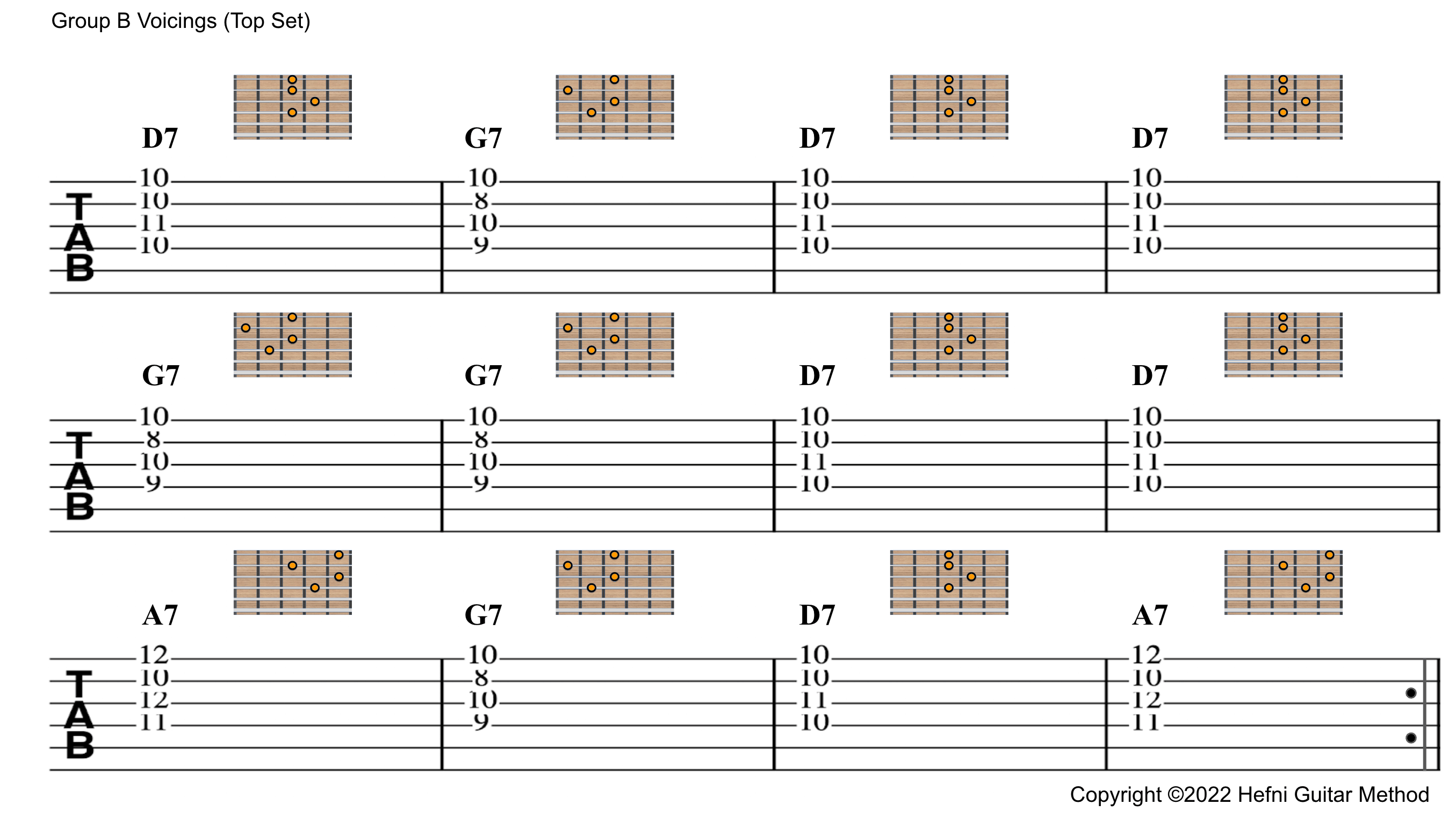Welcome to the Blues Chords Workshop Lesson 6.
In this lesson, we will explore the next group of voicings for the 12-Bar Blues in D on the top strings between the 8th and 12th frets. Let us call this the top structure of Group B Voicings for Blues.
Click on the video below to watch the lesson.
Learning Aids
The TABs and chord diagrams for the Lesson 6 are presented below.

Primary Takeaways from Blues Chords Workshop Lesson 6
The main takeaways of lesson 2 are as follows:
1. Movable Pivots only
For this lesson, there are no fixed pivots on which our fretting hand can stabilise. There are only movable pivot. On the I chord, we are using our index finger to bar the top 4 strings on 10th fret. We also use our middle finger to press down the 3rd string on the 11th fret. Therefore, our middle finger serves as the movable pivot when changing between the I and IV chords. Without lifting it off the string, slide the middle finger back to the 10th fret for the change from the I to IV chord and configure the remaining fingers accordingly. Subsequently, reverse this action to change back from teh IV to the I chord.
2. I to IV chord change
In bar 9, the middle finger again functions as the movable pivot. This time however, the slide is one fret up the neck to the 12 fret. Subsequently, the remaining fingers need to configure themselves into the familiar shape shared by both the IV and V chords.
3. V to IV chord change
Since the VI and V chords share the same shape, all 4 fingers are movable pivots when changing from the V to IV chord in bar 10. Therefore, do not lift your fingers instead slide the entire shape down the string by 2 frets.
Tips for Better Learning
The Blues Advantage
You will encounter these same chord shapes in Lesson 8 albeit higher up the neck and in a different sequence. As observed in the voicing groups on the middle strings, this phenomenon occurs because in Blues, all chords are dominant 7th chords. Therefore a I to IV chord change for instance D7 to G7 in D Blues is also a V to I chord change with G as the target.
Although we are sticking to one key for. now, the shapes are shared because of the use of dominant 7th chords. The takeaway here is that if we only learn one position for blues, we truly are not maximising our learning particularly when we already know the shape changes.
